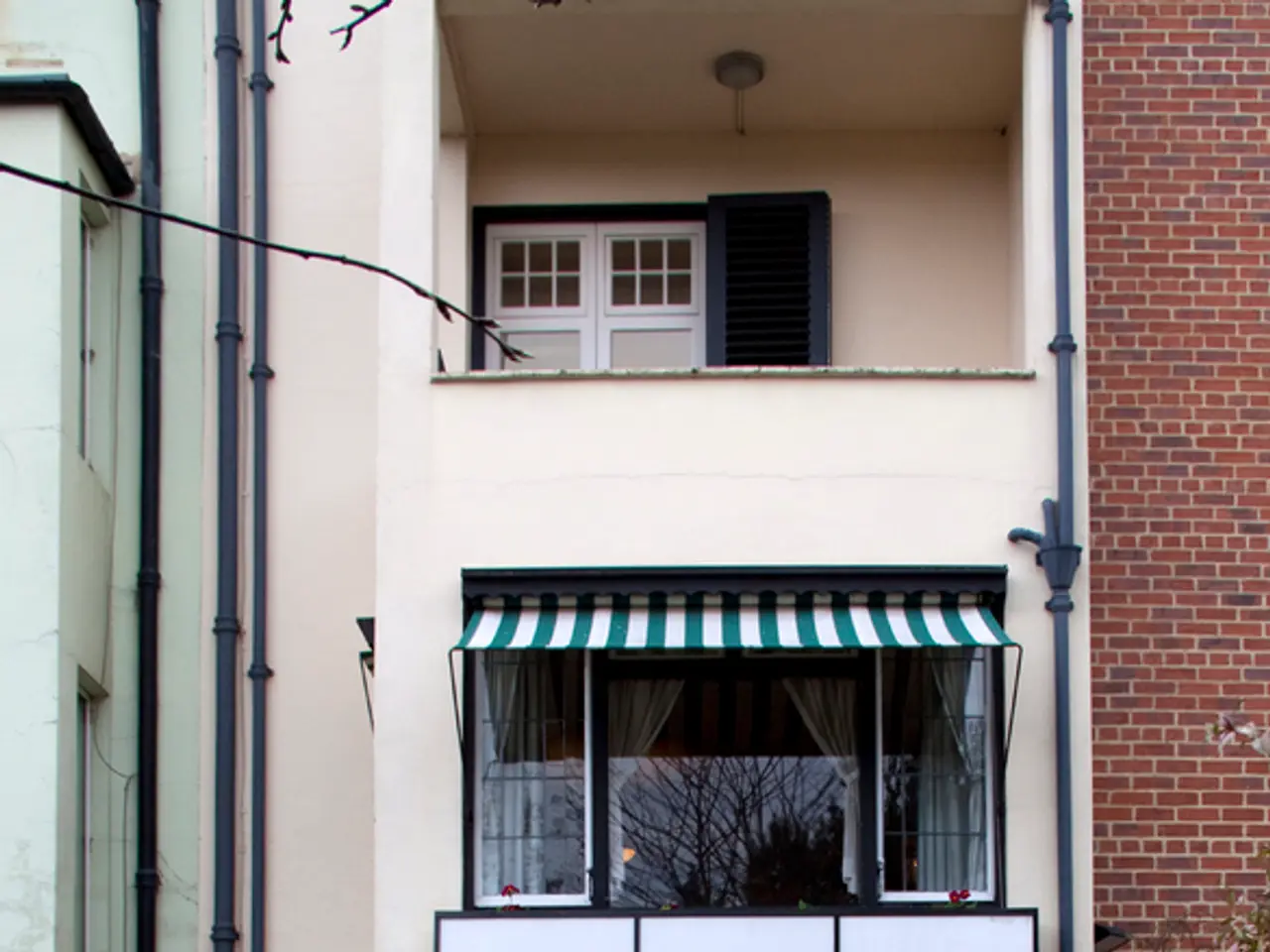Guide to Turning Your Balcony into a Flourishing Sanctuary of Flowers
In the heart of Australia's bustling city, Melbourne, more people than ever are calling apartments their home. With inner-city Melbourne recording the most apartment dwellers in the country, it's no wonder that the desire for green spaces is on the rise. But how can one create a thriving, sustainable high-rise balcony garden in Melbourne, optimised for extreme conditions?
Plant Selection
The key lies in selecting Mediterranean-style, drought-tolerant species that thrive in Melbourne’s sun exposure and dry conditions. Olive trees (Olea europaea), dwarf pines like Pinus mugo or Scots Pine ‘Watereri’, soft, airy grasses such as Stipa tenuissima, copper-tinged grasses Carex testacea, ground covers like Nepeta racemosa ‘Walker’s Low’ (catmint) and Santolina chamaecyparissus (cotton lavender) are all ideal choices. These plants not only tolerate full sun and need minimal water, but they also add a touch of Mediterranean charm to your balcony.
Watering Tips
Watering efficiently is crucial in Melbourne's extreme conditions. Using self-watering containers or drip irrigation systems ensures slow-release watering, reducing water waste. Mulching pots helps retain moisture and reduce evaporation, while watering early mornings or late evenings minimises water loss through evaporation. Grouping plants with similar water needs optimises irrigation schedules.
Design Solutions for Extreme Conditions
Incorporating design elements that provide shade and shelter is essential. Installing timber sunscreens or pergolas with slatted designs creates partial shade and reduces heat stress on plants while maintaining airflow. Vertical planting structures or trellises maximise space and support climbing plants that provide additional shade and green screening. Layered planting, by mixing tall plants with underplantings like grasses, creates microclimates that buffer plants from direct sun and dry winds. Opting for light-colored pots and decking that reflect sunlight helps keep root zones cooler. Providing protection from strong winds using privacy screens or glass railings maintains the aesthetic of the balcony while ensuring safety.
Sustainability Aspects
Sustainability is a crucial consideration in balcony gardening. Using organic, slow-release fertilizers nourishes plants sustainably. Collecting rainwater for irrigation, where possible, reduces water consumption. Choosing locally adapted native or Mediterranean species requiring less resource input reduces the garden's carbon footprint. Minimising synthetic inputs and using natural pest controls maintains garden health without harming the environment.
By combining these expert strategies in plant selection, watering, and environmentally responsive design, you can create a thriving, sustainable high-rise balcony garden in Melbourne that withstands extreme weather while enhancing both the beauty and livability of your outdoor space.
Looking out to green spaces can improve mental focus and attention span, making a balcony garden not just aesthetically pleasing, but also beneficial for mental health. Even those with a small courtyard or balcony can cool their own private space by growing a few plants. As humans seem to be programmed to be in nature, even looking at fake green plants helps hospital patients recover faster and experience less pain.
References:
- Inner City Nature (2021). Balcony Gardening in Extreme Conditions. [Online] Available at: https://www.innercitynature.org.au/balcony-gardening-in-extreme-conditions/
- Hutchinson, B. (2021). Balcony Garden Design Tips. [Online] Available at: https://www.abc.net.au/gardening/stories/s4813038.htm
- Morrison, P. (2021). Edible Balcony Garden Design. [Online] Available at: https://www.abc.net.au/gardening/stories/s4813038.htm
- Melbourne News (2021). Melbourne's High-Rise Boom. [Online] Available at: https://www.melbournenews.com.au/real-estate/melbournes-high-rise-boom/
- Victorian Government (2017). Report on Urban Tree Canopy Loss. [Online] Available at: https://www.planning.vic.gov.au/__data/assets/pdf_file/0020/379861/Urban-Tree-Canopy-Report-2017.pdf
- Transforming your apartment into a home-and-garden haven, even in high-rise buildings, can be achieved with careful plant selection and design solutions tailored to Melbourne's extreme conditions. Mediterranean-style, drought-tolerant plants like olive trees, miniature pines, catmint, and cotton lavender are ideal options for creating a thriving balcony garden.
- To maintain the health and growth of your high-rise balcony garden in Melbourne, consider employing watering tips such as using self-watering containers or drip irrigation systems, mulching pots, and practicing efficient irrigation schedules based on the water needs of individual plants. Grouping plants together and employing design solutions like sunscreens, pergolas, trellises, and wind screens can also optimize the garden's sustainability and livability.




